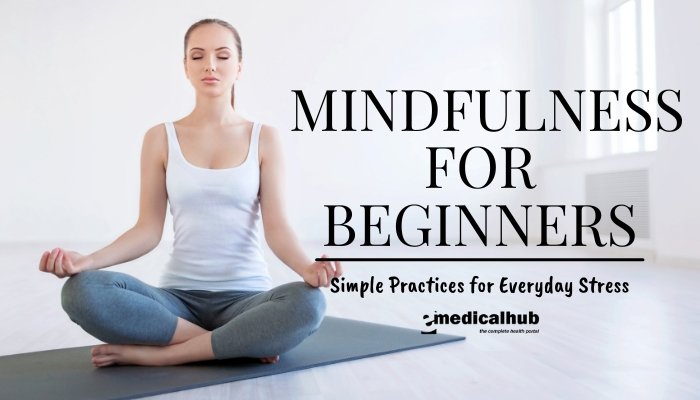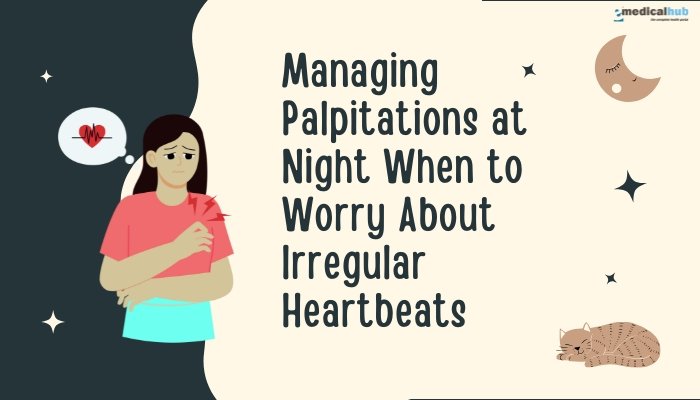Introduction
In today’s fast-paced world, modern medicine often focuses on treating symptoms and diseases through advanced technology and pharmaceuticals. However, an increasing number of patients and healthcare providers are recognizing the value of mind-body healing practices as a complementary approach to conventional medical treatment.
Meditation and yoga, two cornerstone practices in mind-body healing, have been shown to reduce stress, improve mental clarity, and support physical recovery. They foster a holistic approach to well-being, integrating physical postures, breathing techniques, and mindfulness to create a harmonious balance between the mind and body.
This article explores how meditation and yoga complement medical treatment, examines the scientific evidence supporting their benefits, and provides practical guidance on incorporating these practices into a comprehensive health regimen.
Disclaimer: This article is intended for educational purposes only and does not replace personalized medical advice. If you have health concerns or are considering integrating mind-body practices into your treatment plan, please consult a qualified healthcare provider.
Understanding Mind-Body Healing
The Concept of Mind-Body Healing
Mind-body healing is an integrative approach that emphasizes the interconnection between mental and physical health. It is based on the premise that the mind’s state—emotions, thoughts, and beliefs—directly influences bodily functions and overall health. Key principles include:
- Holistic Health: Treating the whole person rather than just isolated symptoms.
- Self-Regulation: Encouraging the body’s natural ability to heal by reducing stress and promoting relaxation.
- Patient Empowerment: Enabling individuals to actively participate in their healing process through practices that enhance self-awareness and mindfulness.
Historical Perspectives
Mind-body practices are rooted in ancient traditions from various cultures:
- Eastern Traditions: Yoga and meditation have been integral to Hinduism and Buddhism for millennia, promoting balance, mental clarity, and spiritual growth.
- Western Adaptations: Over recent decades, concepts such as mindfulness-based stress reduction (MBSR) have gained popularity in Western healthcare, bridging ancient wisdom with modern science.
- Integrative Medicine: Today, mind-body healing is a fundamental component of integrative medicine, where conventional treatments are complemented by practices that nurture the mind and spirit.
Meditation: A Tool for Healing and Balance
What Is Meditation?
Meditation is a practice that involves focusing the mind to achieve a state of heightened awareness and relaxation. It encompasses various techniques, such as:
- Focused Attention: Concentrating on a single point of reference, such as the breath, a mantra, or a visual object.
- Open Monitoring: Observing thoughts, feelings, and sensations without attachment or judgment.
- Guided Meditation: Following a recorded or live guide to lead the meditation process, often incorporating imagery and affirmations.
Mechanisms of Meditation in Healing
Meditation exerts its benefits through several physiological and psychological pathways:
- Stress Reduction: Meditation lowers cortisol levels, helping to reduce the harmful effects of chronic stress on the body.
- Neurotransmitter Regulation: Regular practice has been linked to increased production of serotonin and endorphins, which improve mood and promote a sense of well-being.
- Neuroplasticity: Studies suggest that meditation can enhance brain plasticity, improving attention, memory, and emotional regulation.
- Autonomic Balance: Meditation shifts the body from a sympathetic (fight-or-flight) state to a parasympathetic (rest-and-digest) state, promoting relaxation and recovery.
Evidence Supporting Meditation for Health
Clinical research has provided insights into the benefits of meditation:
- Anxiety and Depression: Numerous studies have shown that mindfulness meditation can significantly reduce symptoms of anxiety and depression.
- Chronic Pain: Meditation has been effective in helping individuals manage chronic pain by altering pain perception.
- Cardiovascular Health: Regular meditation is associated with lower blood pressure and reduced risk of heart disease.
- Overall Well-Being: Improvements in sleep quality, reduced stress, and enhanced quality of life are common outcomes among long-term practitioners.
Yoga: Integrating Physical Movement with Mindfulness
What Is Yoga?
Yoga is an ancient practice that combines physical postures (asanas), breathing techniques (pranayama), and meditation to improve overall health. It is renowned for its ability to enhance flexibility, strength, and balance while also reducing stress and anxiety.
How Yoga Supports Healing
Yoga contributes to mind-body healing through:
- Physical Benefits:
- Improved Flexibility: Regular practice helps lengthen muscles and increase joint mobility.
- Strength Building: Many yoga poses build muscular strength, particularly in the core, arms, and legs.
- Posture and Alignment: Yoga promotes better alignment, reducing the risk of musculoskeletal injuries.
- Mental Benefits:
- Stress Relief: Yoga’s meditative components lower stress hormones and promote relaxation.
- Mindfulness: By focusing on breath and movement, yoga encourages present-moment awareness, reducing rumination.
- Emotional Balance: Regular practice can improve mood and enhance emotional resilience.
Scientific Evidence for Yoga
Research supports the use of yoga for various health benefits:
- Reduction in Stress and Anxiety: Multiple studies have found significant decreases in anxiety levels among yoga practitioners.
- Chronic Pain Management: Yoga has been shown to reduce pain and improve functionality in conditions such as lower back pain and arthritis.
- Enhanced Mental Health: Yoga practices contribute to improvements in cognitive function, memory, and overall mental well-being.
- Cardiovascular and Metabolic Health: Yoga can help lower blood pressure, improve lipid profiles, and support weight management.
How Meditation and Yoga Complement Medical Treatment
Enhancing Conventional Medical Treatments
When integrated with conventional medical care, meditation and yoga can offer several complementary benefits:
- Reduced Medication Dependency: Patients practicing mind-body techniques often experience reduced symptoms, which may lead to lower dosages of pain medications, antidepressants, or anti-anxiety drugs.
- Improved Treatment Outcomes: Enhanced mental well-being and stress reduction can boost immune function and improve recovery rates from various conditions.
- Holistic Healing: Meditation and yoga address not only the physical aspects of disease but also the emotional and psychological factors that influence healing.
Integrative Care Models
Many healthcare institutions now incorporate mind-body therapies into their treatment protocols:
- Hospitals and Clinics: Some hospitals offer yoga classes, meditation sessions, and integrative therapy programs to support patient recovery.
- Chronic Disease Management: Patients with conditions such as hypertension, diabetes, and chronic pain are encouraged to engage in mindfulness and yoga to complement traditional treatments.
- Mental Health Care: Integrative approaches that include meditation and yoga have been used to manage depression, anxiety, and post-traumatic stress disorder (PTSD).
Real-World Applications
- Cancer Care: Mindfulness meditation has been integrated into cancer care programs to reduce anxiety, improve sleep, and enhance quality of life during treatment.
- Cardiac Rehabilitation: Yoga is increasingly included in rehabilitation programs for heart disease patients, helping to improve cardiovascular health and emotional well-being.
- Pain Clinics: Many pain management clinics offer meditation and yoga as adjunct therapies to help patients manage chronic pain and reduce reliance on opioids.
Practical Tips for Incorporating Meditation and Yoga
Starting a Meditation Practice
Choosing a Technique
- Focused Attention Meditation: Concentrate on your breath, a mantra, or a specific sound.
- Mindfulness Meditation: Observe your thoughts and feelings without judgment.
- Guided Meditation: Use apps or recordings to guide you through the process.
Creating a Routine
- Set Aside Time Daily: Start with 5-10 minutes per day and gradually increase as you become more comfortable.
- Find a Quiet Space: Dedicate a calm, quiet area for meditation.
- Be Consistent: Try to meditate at the same time each day, whether in the morning or before bed.
- Use Technology: Consider apps like Headspace, Calm, or Insight Timer to structure your sessions.
Integrating Yoga into Your Life
Choosing a Style
- Hatha Yoga: Focuses on gentle postures and is ideal for beginners.
- Vinyasa Flow: Involves dynamic movements linked to breath for a more active practice.
- Restorative Yoga: Uses props to support deep relaxation, suitable for stress relief and recovery.
- Yin Yoga: Involves holding poses for several minutes to improve flexibility and calm the mind.
Creating a Home Practice
- Designate a Space: Set up a small area at home with a yoga mat and minimal distractions.
- Online Resources: Use free online classes or apps that offer guided yoga sessions tailored to different levels and needs.
- Mix and Match: Combine different styles to create a routine that addresses both physical and mental goals.
- Schedule Regular Sessions: Even 20-30 minutes of yoga a few times a week can yield significant benefits.
Combining Meditation and Yoga
- Mindful Yoga: Incorporate meditation into your yoga practice by focusing on your breath and body sensations during each pose.
- Post-Practice Meditation: End your yoga session with a short meditation or relaxation period (e.g., Savasana followed by guided meditation).
- Breathing Exercises: Practice pranayama (breath control exercises) as a bridge between physical movement and mental relaxation.
Overcoming Common Barriers
Time Constraints
- Short Sessions: Even brief practices (5-10 minutes) can be beneficial. Consider integrating mini-sessions into your daily routine.
- Flexible Scheduling: Use mobile apps that allow you to practice anytime, whether during a lunch break or before bed.
Lack of Experience
- Beginner-Friendly Resources: Start with beginner classes and guided sessions to build confidence and learn proper techniques.
- Community Support: Join local or online meditation and yoga groups for encouragement and shared learning.
Skepticism and Expectations
- Manage Expectations: Understand that the benefits of mind-body practices often accrue gradually. They are most effective as part of a long-term lifestyle change.
- Track Progress: Keep a journal to record changes in mood, stress levels, sleep quality, and overall well-being.
- Combine with Conventional Treatments: View meditation and yoga as complementary to, not replacements for, conventional medical treatments.
Scientific Evidence and Case Studies
Overview of Clinical Studies
Numerous studies have explored the benefits of meditation and yoga:
- Meta-Analyses on Meditation: Reviews indicate that mindfulness meditation can reduce symptoms of anxiety and depression, with improvements in stress and quality of life.
- Yoga Research: Clinical trials have demonstrated that yoga can lower blood pressure, improve sleep quality, and reduce chronic pain.
- Integrative Approaches: Studies in cancer care, cardiac rehabilitation, and chronic pain management have shown that combining mind-body practices with standard treatments leads to better patient outcomes.
Real-World Examples
- Case Study: Anxiety Reduction in Adults
A group of adults participating in an 8-week mindfulness meditation program reported significant reductions in anxiety and stress, with many experiencing improved sleep and enhanced focus. - Case Study: Yoga in Cardiac Rehabilitation
Patients undergoing cardiac rehabilitation who added yoga to their exercise regimen showed better improvements in heart rate variability and reported higher overall quality of life compared to those who engaged in standard rehabilitation alone. - Case Study: Chronic Pain Management
Individuals with chronic lower back pain experienced reduced pain intensity and improved functional mobility after incorporating yoga and meditation into their treatment plan, alongside conventional therapies.
Limitations and Areas for Future Research
While the evidence is promising, further research is needed to:
- Determine optimal practice durations and frequencies.
- Understand individual variations in response.
- Explore long-term outcomes of integrative mind-body interventions.
- Standardize protocols across different studies to improve comparability.
Practical Tips for Maximizing Benefits
Establishing a Routine
- Consistency: The key to success is regular practice. Aim to set aside specific times each day or week for meditation and yoga.
- Start Small: Begin with short sessions and gradually increase duration as you become more comfortable.
- Create a Dedicated Space: Even a small, quiet corner in your home can serve as a meditation or yoga area.
Using Technology Wisely
- Apps and Online Classes: Leverage resources such as Headspace, Calm, or yoga platforms like Yoga with Adriene.
- Tracking Tools: Use meditation and yoga logs or apps that allow you to record progress, helping you stay motivated.
- Virtual Communities: Join online groups to share experiences, seek advice, and gain encouragement from others on similar journeys.
Combining with Other Health Practices
- Nutrition: Complement your mind-body practices with a balanced diet rich in antioxidants and anti-inflammatory foods.
- Physical Activity: Even if your primary focus is on yoga and meditation, incorporating aerobic or strength exercises can enhance overall health.
- Sleep Hygiene: Good sleep supports both mental and physical recovery. Use your mind-body practices to develop a calming bedtime routine.
- Stress Management: In addition to meditation and yoga, consider other stress-reduction techniques like journaling, deep breathing exercises, or spending time in nature.
Frequently Asked Questions (FAQ)
How long does it take to see benefits from meditation and yoga?
While some people experience immediate relaxation after a session, significant benefits such as reduced anxiety, improved sleep, and enhanced focus often take several weeks of consistent practice.
Do I need to be flexible to start yoga?
No. Yoga is highly adaptable. Many poses can be modified for beginners or those with limited flexibility. The focus is on gradual improvement rather than immediate perfection.
Can meditation help with chronic pain?
Yes, mindfulness meditation has been shown to alter pain perception and improve coping strategies for chronic pain. It is often used as a complementary therapy alongside other treatments.
Is guided meditation better than self-led meditation?
For beginners, guided meditation can provide structure and focus. As you gain experience, you may find that self-led meditation offers greater flexibility and personalization.
How can I incorporate these practices into a busy schedule?
Start with small increments—5-10 minutes of meditation or yoga during breaks. Use technology, such as smartphone apps, to facilitate quick sessions, and gradually build up to longer, more consistent practices.
What if I don’t experience immediate benefits?
Mind-body practices require regular, long-term commitment. If you do not notice improvements right away, continue with consistent practice and consider adjusting your routine or seeking guidance from a teacher.
Can meditation and yoga replace medical treatments?
They are best used as complementary therapies. While they offer substantial benefits, they should not replace conventional medical treatments, particularly for serious conditions.
Are there any side effects of meditation or yoga?
Generally, these practices are safe for most people. However, some may experience mild discomfort or muscle soreness in yoga, or emotional discomfort during deep meditation. Modify exercises as needed and consult a professional if issues persist.
How do I choose the right style of yoga?
Consider your fitness level and goals. Hatha or Restorative Yoga is ideal for beginners or stress relief, while Vinyasa or Power Yoga may be better if you’re looking for a more active practice.
What if I have physical limitations?
Many yoga poses can be adapted with props such as blocks, straps, or chairs. Look for classes specifically designed for individuals with mobility issues or consult a yoga therapist.
Can meditation improve concentration and productivity?
Yes, many practitioners report enhanced concentration, better memory, and increased productivity after regular meditation practice.
How can I measure progress in my mind-body practice?
Keeping a journal, tracking improvements in mood and stress levels, and noting changes in physical flexibility or strength can help measure progress. Some apps also provide structured progress tracking.
Conclusion
Meditation and yoga represent powerful, time-tested practices that complement conventional medical treatments by nurturing the mind-body connection. Together, these practices can reduce stress, alleviate chronic pain, improve mental clarity, and enhance overall well-being. Their holistic approach addresses both the physical and psychological aspects of health, empowering individuals to take control of their healing journey.
By integrating regular meditation and yoga into your lifestyle, you can tap into the natural benefits of these practices—supporting improved sleep, reduced anxiety, and better stress management. Although results may vary from person to person, consistent practice over time is key to experiencing the transformative effects of mind-body healing.
Ultimately, meditation and yoga are not substitutes for medical treatments but valuable complements that help create a balanced approach to health. As part of a broader integrative care plan, these practices can improve quality of life, foster resilience, and enhance the effectiveness of conventional therapies. Embrace a daily practice that nurtures both mind and body, and experience the long-term benefits of a harmonious, holistic approach to healing.
References
- Kabat-Zinn J. Full Catastrophe Living: Using the Wisdom of Your Body and Mind to Face Stress, Pain, and Illness. Delta; 1990.
- Goyal M, et al. Meditation programs for psychological stress and well-being: a systematic review and meta-analysis. JAMA Intern Med. 2014;174(3):357-368.
- Khoury B, et al. Mindfulness-based therapy: A comprehensive meta-analysis. Clin Psychol Rev. 2013;33(6):763-771.
- Pascoe MC, et al. The effects of yoga on stress, anxiety, and depression in women: A systematic review and meta-analysis. J Psychosom Res. 2017;100:116-130.
- Streeter CC, et al. Effects of yoga on the autonomic nervous system, gamma-aminobutyric-acid, and allostasis in epilepsy, depression, and post-traumatic stress disorder. Med Hypotheses. 2012;78(5):571-579.
- Cahn BR, Polich J. Meditation states and traits: EEG, ERP, and neuroimaging studies. Psychol Bull. 2006;132(2):180-211.
- Gard T, et al. The potential effects of meditation on age-related cognitive decline: a systematic review. Ann N Y Acad Sci. 2014;1307:89-103.
- Hartfiel N, et al. The effectiveness of yoga for improving sleep quality: A systematic review and meta-analysis. Sleep Med Rev. 2011;15(5):311-318.
- Ross A, Thomas S. The health benefits of yoga and exercise: a review of comparison studies. J Altern Complement Med. 2010;16(1):3-12.
- Tang YY, Hölzel BK, Posner MI. The neuroscience of mindfulness meditation. Nat Rev Neurosci. 2015;16(4):213-225.
- Field T. Yoga clinical research review. Complement Ther Clin Pract. 2011;17(1):1-8.
- U.S. Department of Health and Human Services. Physical Activity Guidelines for Americans, 2nd Edition. 2018.







